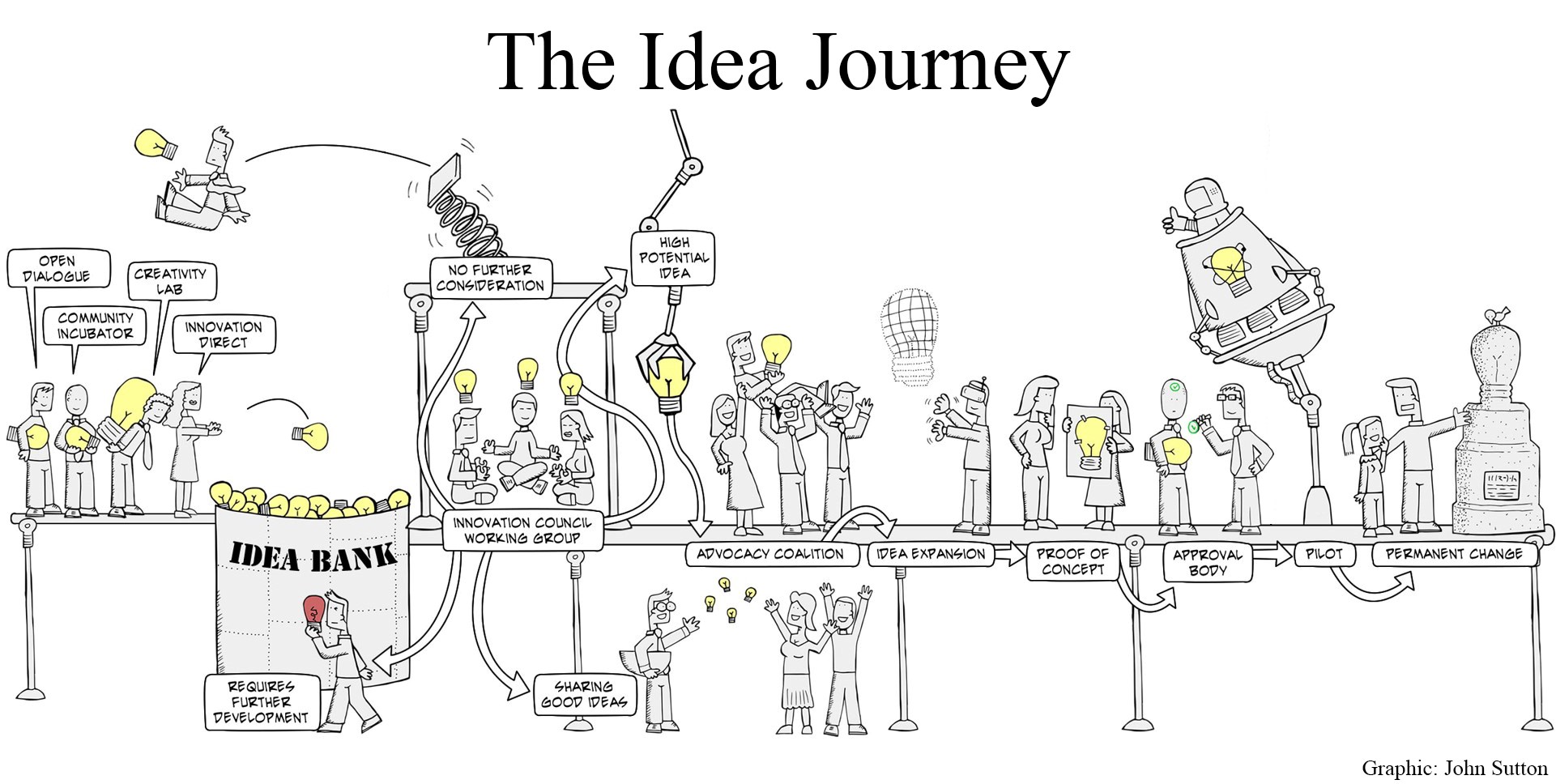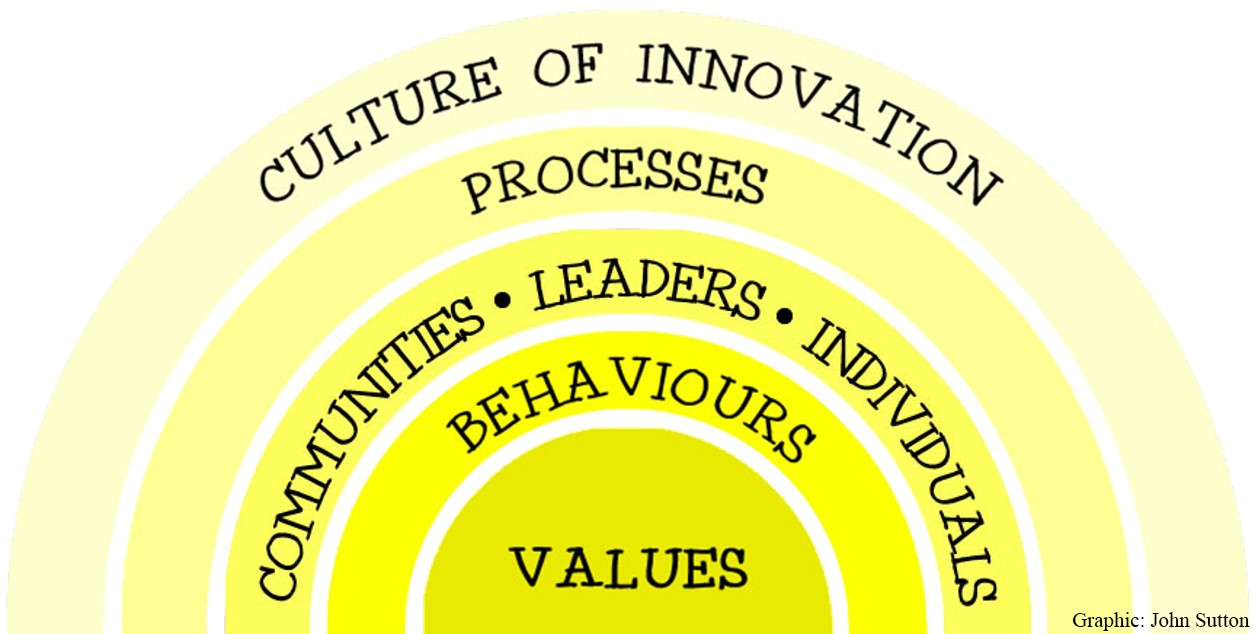The Idea Journey
On a warm Roman spring morning in 30 AD, a young man named Appius walked down the Via Sacra toward the Foro Romano. He had a bounce in his step as he anticipated the many discussions that would ensue when he got to the Basilica Julia, the grand hall in the centre of the Forum. The Basilica was the place where Appius went to hear about issues, proposals, and news from faraway places. He was excited to share his ideas with other smart minds.
What Appius was a part of – almost 2,000 years ago – was not just a place where ideas could be exchanged and developed, but a broader culture of innovation that existed in Rome’s late republic and early imperial period. It produced some of the most staggering innovations in history. Well-known innovations, such as concrete or the arch, allowed for the building of now famous structures like the Pont du Gard aqueduct or the Roman Coliseum. The Romans created a culture where innovation was treasured. Leaders encouraged learning, valued knowledge, and rewarded accomplishments. They created a culture of prolific innovators.
Innovation in the Roman Empire, however, was not without challenges, and the barriers they faced were surprisingly like those faced by today’s large government organizations. The absence of competitive pressures that influence commercial organizations can produce a stand-pat mentality and resistance to change. Increasing public intolerance for missteps by government organizations has increased their aversion to risk. The hierarchical governance of the public sector has produced a top-down approach to innovation which overlooks the employees on the ground. Finally, increasing centralization of organizations has narrowed the catchment potential for ideas.
A Culture of Innovation Creating an innovative culture in large government organizations, whose core business is not innovative, is difficult. The skill sets and expertise of employees is largely focused on the core deliverables of the organization, such as financial regulation, tax administration, economic development, health management, or education, just to name a few. Government organizations often look longingly at commercial companies that have clear innovative cultures such as those in high tech or emerging industries. That comparison, however, is not fitting. Commercial organizations often have a mandate to create something faster, smarter, and newer and their core values reflect that. It is different for government. What government organizations do have is an entrenched set of values; and that is where we will start.
The core values of most government organizations are some combination of integrity, respect, collaboration, cooperation, reliability and fairness. Managers and employees are made aware of these values from the time they join the organizations. They live them and practice them throughout their careers. That respect for core values creates a culture. The key to creating an innovative culture in government organizations therefore is to embed innovation as a core value and send a clear message that innovative behaviours are valued as much as behaviours associated with the other traditional core values.
There are several key innovative behaviours that the organization should value. An innovative culture requires collaboration with a focus on working together. Determination must be valued, along with an element of provocation. Egos need to be checked and organizations must be open and transparent about ideas and initiatives. Hits must be recognized, and misses supported. Who in the organization should demonstrate innovative behaviours and values? The short answer is everybody, but more easily identified as leaders, communities and individuals.
Leaders must provide inspiration, support and encouragement. Leaders must model innovative values and allow employees to take risks and ensure an environment where failures are not fatal. They must create a fearless environment. Leaders must also take a step back when successes are recognized and a step forward when an idea fails.
Organizations are comprised of dozens of communities such as work teams, management groups and special committees. These communities must challenge themselves to be creative and seek common solutions. They must support each other and use their collective influence to promote the innovative culture. Individuals should feel free to challenge what has been the norm. They must be passionate and relentless. They should be comfortable taking thoughtful risks.


